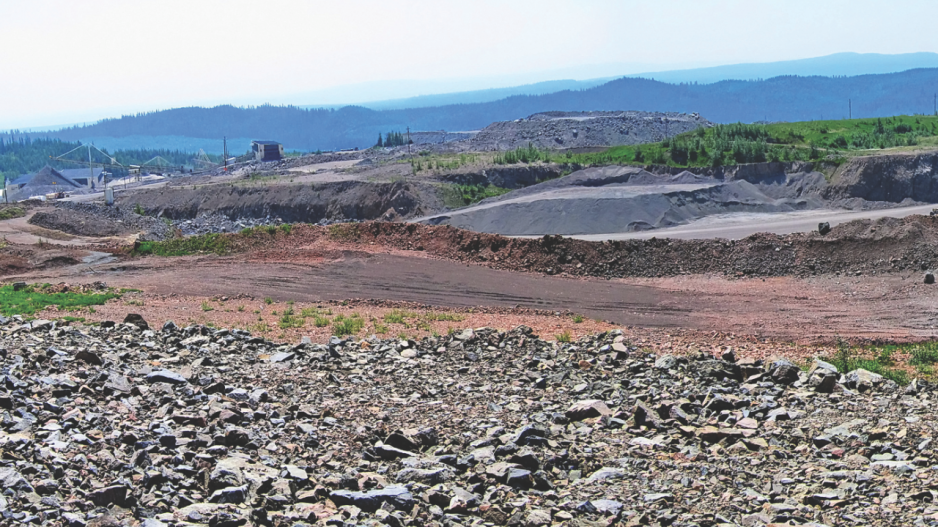A new mining policy issued by four Shuswap bands could bring more certainty for companies wanting to develop new mines in the region.
Or it could add a layer of bureaucracy that sends investment out of B.C., similar to the 1990s, when NDP anti-mining policies scared mining and exploration companies away from B.C.
It depends on how the B.C. government responds to it, says a lawyer specializing in aboriginal law.
On December 1, the Northern Secwepemc te Qelmucw (NStQ) published a new set of guidelines for mining and exploration within the claimed territories of four bands near Williams Lake: the Xat’sull, T’exelc, Tsq’escen’ and Stswecem’c/Xgat’tem.
The 55-page document has been in the works for a couple of years, but Jacinda Mack, mining co-ordinator for the NStQ, said the Mount Polley mine disaster has added urgency to publishing the new guidelines. Mount Polley is one of four operating mines in the NStQ’s claimed territory, which is still the subject of treaty negotiations.
“It really affirmed for us that we had to get this policy out there in public,” Mack said.
“One of the biggest things on our plate is dealing with the cleanup. This policy really lays out the expectations for how we want best practices to be adhered to.”
The policies are aimed at operating mines and new exploration and development projects.
In addition to setting out the rules for mine development in the Shuswap, the NStQ wants the province to reform its open-staking process, which Mack said allows anyone with a credit card to stake a claim online – something that has spawned a proliferation of small placer mines.
The new policies state that NStQ consent is needed before any mining can take place in the claimed territory, which includes Williams Lake and Clinton to the west, Kamloops to the south and Revelstoke to the east.
The bands’ regulations also include requiring revenue sharing and a polluter-pays principle that will require the Crown to cover the expense of environmental cleanup if a mining company defaults on that responsibility.
One policy that might make some companies nervous states that the bands “will consider the past performance of a proponent in evaluating a proposed mining activity.”
So if Imperial Metals (TSX:III) wanted to explore in NStQ territory, the Mount Polley incident could weigh against it.
In addition to Mount Polley, there are three other operating mines in the defined region: Gibraltar, run by Taseko Mines Ltd. (TSX:TKO); Barkerville Gold Mines Ltd.’s (TSX-V:BGM) QR Gold mine; and the Black Dome gold mine, operated by Sona Resources Corp. (TSX-V:SYS).
So just how seriously should mining and exploration companies take the new policies? Thomas Isaac, national aboriginal law practice leader for Osler, Hoskin & Harcourt LLP, said there’s both a legal and a political answer.
The legal answer is simple.
“This has no standing at law,” he said. “They don’t have proven aboriginal title. The law is absolutely clear: it’s Crown land, until proven otherwise, and government laws apply.”
But First Nations can prove “otherwise” through the courts. Earlier this year, the Supreme Court of Canada affirmed the Tsilhqot’in First Nation’s title over 2% of its traditional territory, formerly Crown land, as well as hunting and trapping rights extending beyond that land base. The Tsilhqot’in have also sketched out new policies for resource extraction within their territories.
Isaac said the political answer to the question of First Nation authority over mining activities remains to be decided.
“The real question is: ‘What is the government of British Columbia’s answer to this document?’ That is to say, will the government of B.C. affirm – as they should – that provincial laws apply, and government ultimately has the sovereign authority to govern in respect of those lands?”
Asked for a reaction to the new NStQ policies, Energy and Mines spokesman David Haslam wrote that the government is reviewing them, along with the Tsilhqot’in decision.
David Rosenberg, the lawyer who represented the Tsilhqot’in in the landmark Roger William case, agrees that First Nations mining policies have no legal standing, unless the First Nation in question has clear title to the land.
“But that does not mean these new guidelines can be ignored. That would be foolish.
“It is no longer business as usual. Government and industry should pay careful attention to the Tsilhqot’in Nation decision and particularly what the Supreme Court said in paragraph 92.
“If a First Nation establishes aboriginal title to lands that are presently claimed, then projects may be rolled back and provincial laws may be held to be invalid with respect to those lands.”
Mack said the new guidelines should not be viewed as anti-mining, adding that mining employs many First Nations workers.
“This policy isn’t about shutting down mining. It’s about promoting fair, safe, best practices for currently operating mines and for new mines.”
As forestry and energy companies have learned, working directly with First Nations in B.C. before entering government review processes can result in successful partnerships – something the mining sector has been accused of being slow to realize.
The Haisla and Nisga’a, for example, have become important players in multibillion-dollar liquefied natural gas and pipeline projects.




